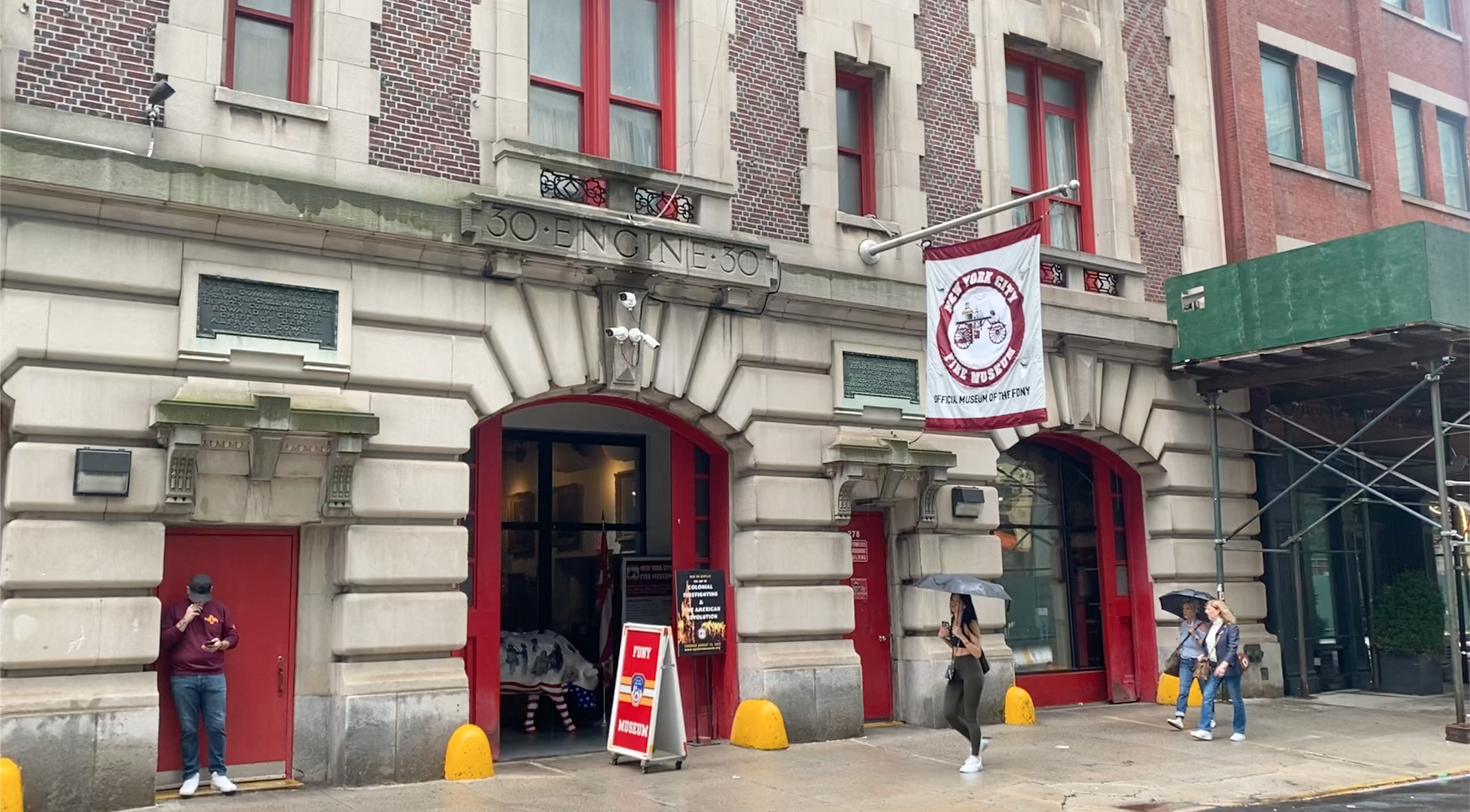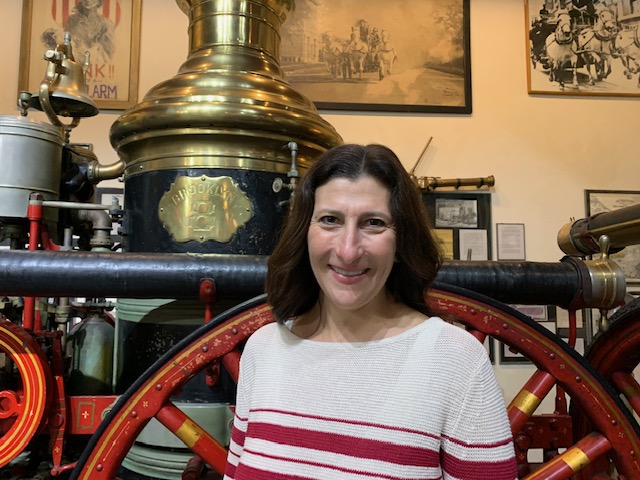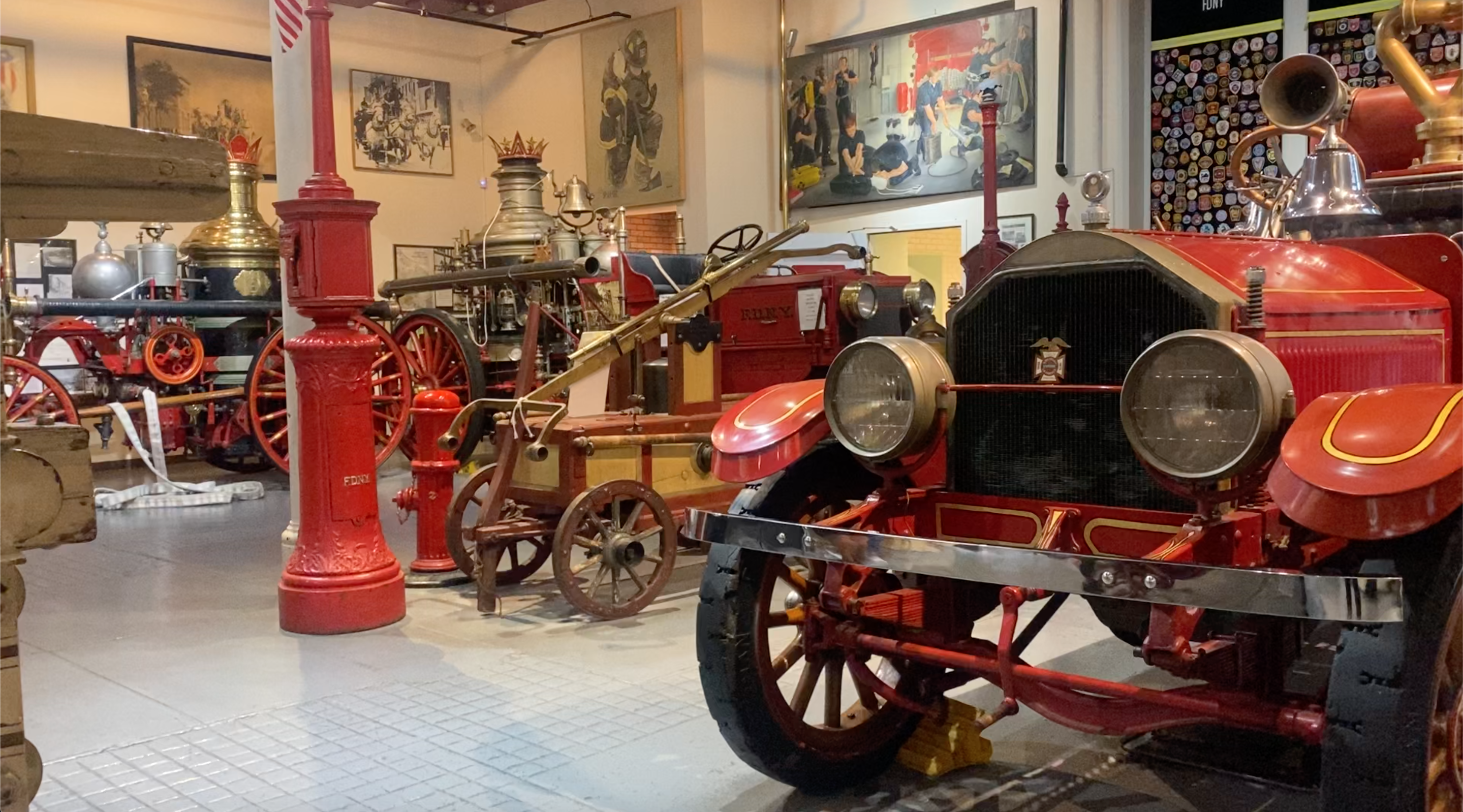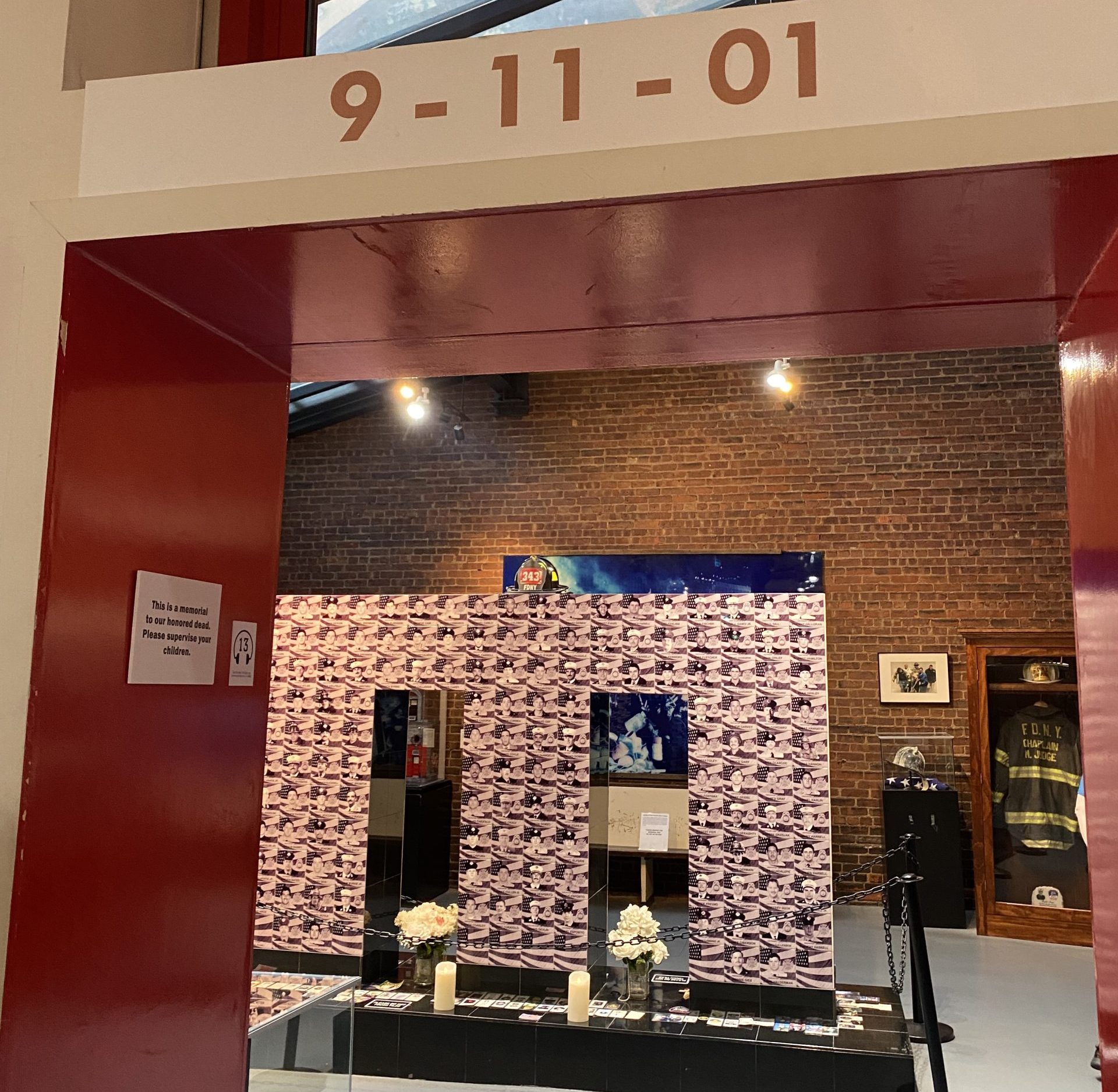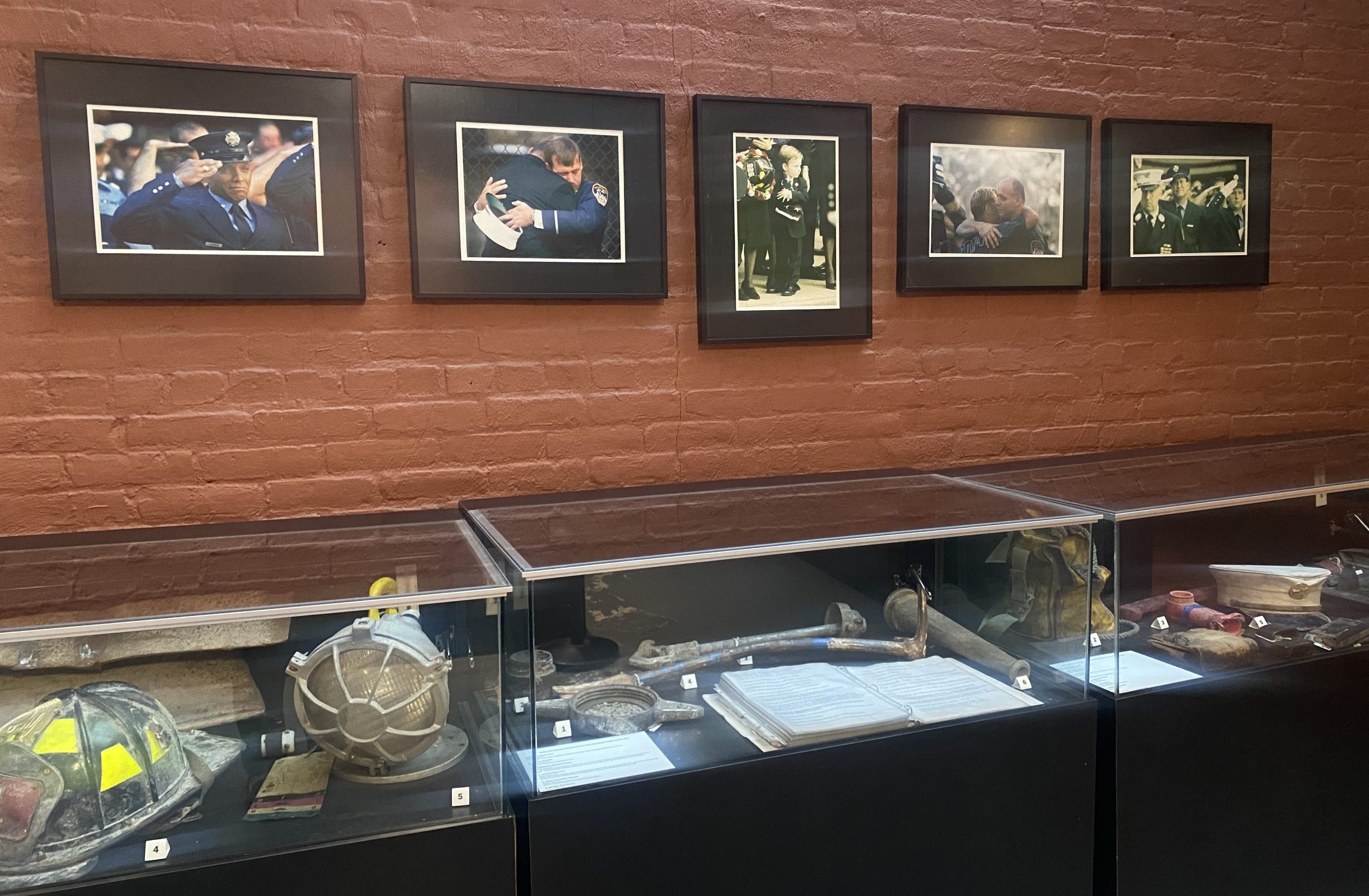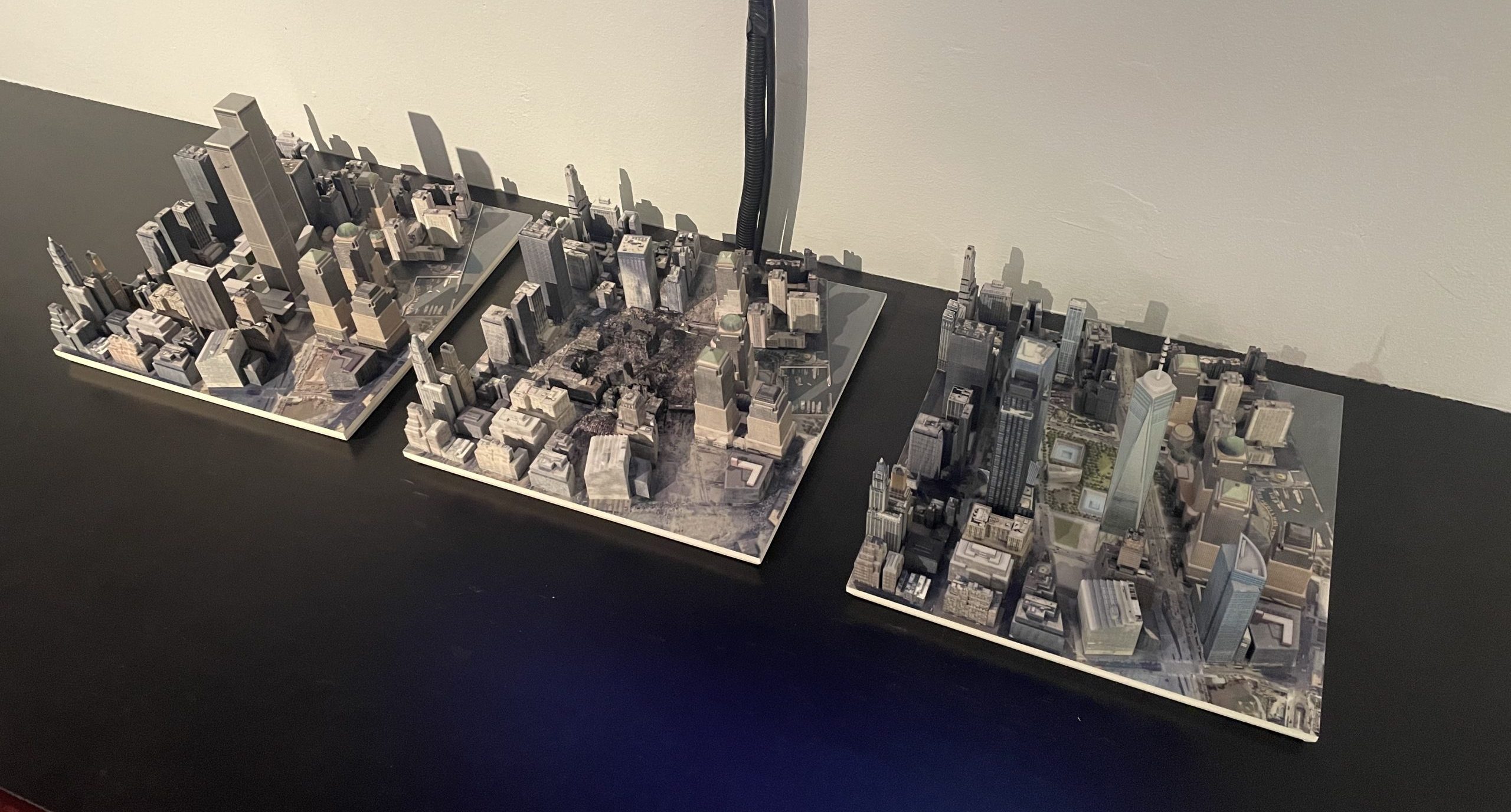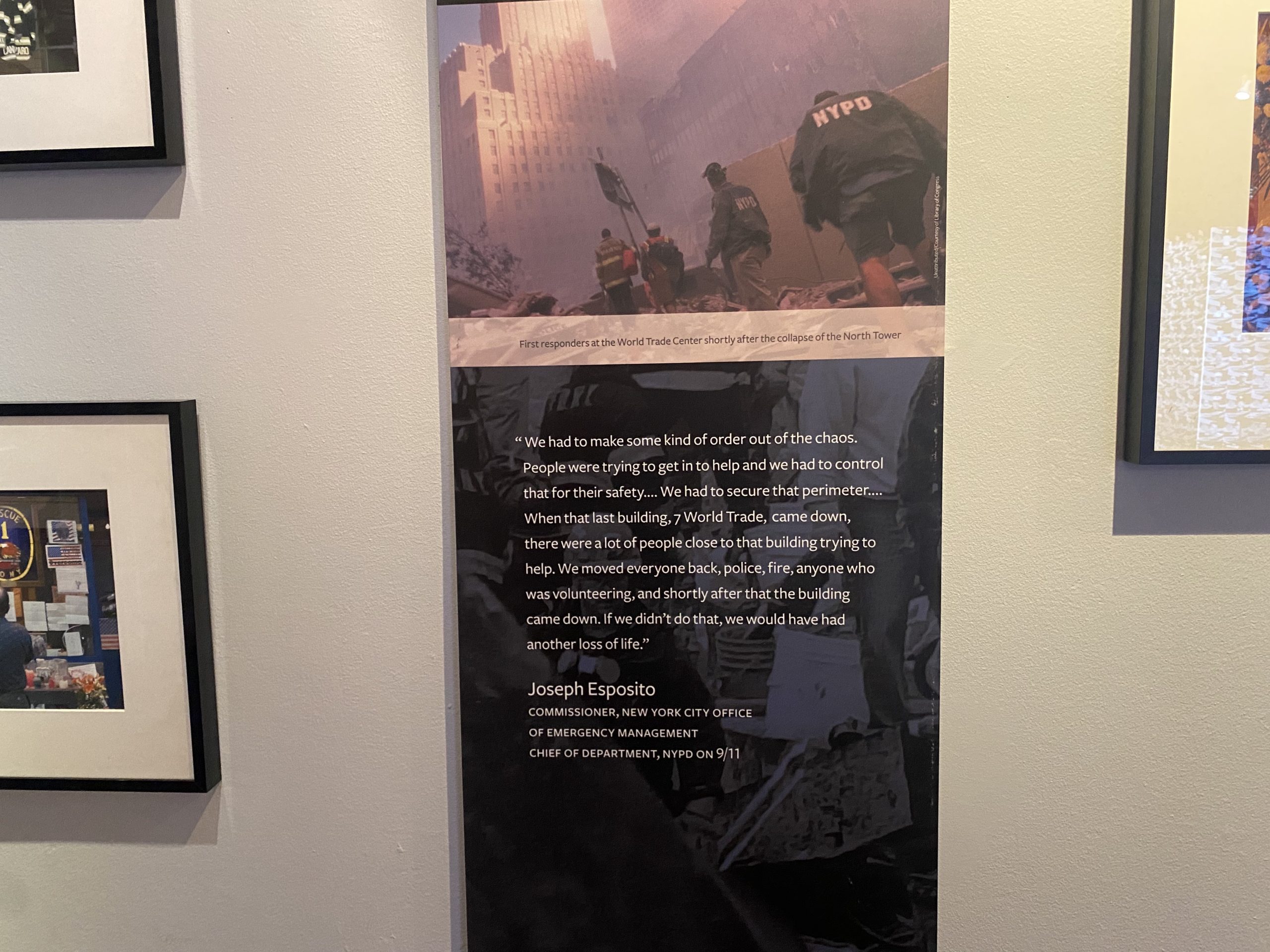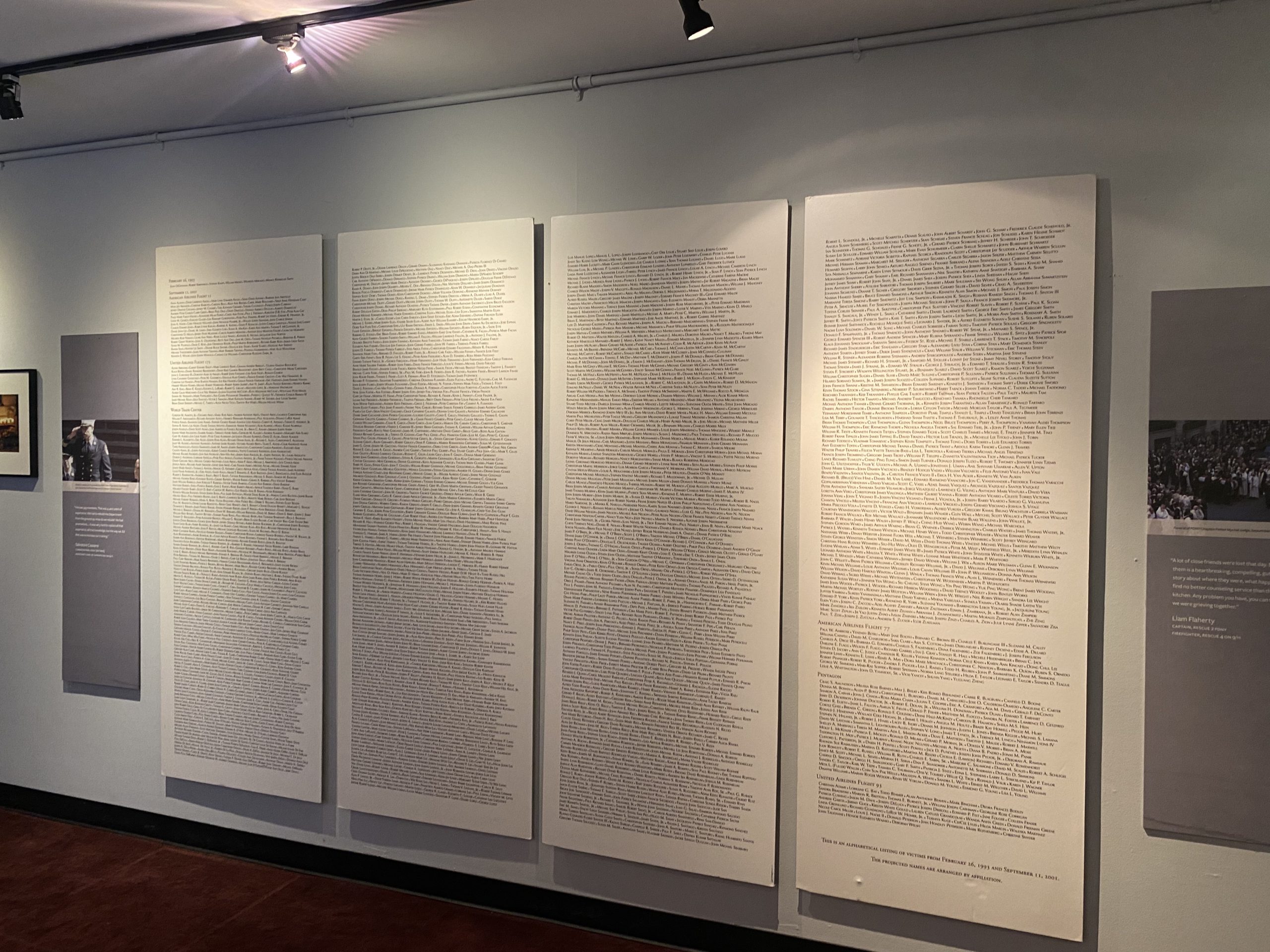With the anniversary of 9/11 approaching, Jennifer Brown, Executive Director of the New York City Fire Museum, is working hard. Actually, she works hard every day, especially since February 2022, when she started as head of the Fire Museum. For the past 18 months, she, along with her colleagues, have been shining a light on the heroic members of the FDNY, especially those who lost their lives on 9/11.
The mission of the New York City Fire Museum is to collect, preserve and present the history and cultural heritage of the fire service of New York and to provide fire prevention and safety education to the public, especially children.
The Fire Museum contains 30,000 objects and artifacts, features 11 galleries, and tens of thousands of visitors from across the globe annually. It houses permanent exhibitions in halls filled with historic artifacts and FDNY vehicles, including a “sidewinder” style hand-pumped fire engine built circa 1820.
One of its most poignant places is the 9/11 Memorial in the courtyard room on the ground floor. This is the first permanent space dedicated to the Fire Department of New York (FDNY) members who lost their lives on 9/11. It is a major draw for people around the world. Every year on September 11, these heroes are honored in a wreath-laying ceremony at the museum, and it is free and open to the public every year on 9/11. In addition, the museum has just opened a new and temporary exhibition featuring items that were on display at the former 9/11 Tribute Museum downtown, which closed in 2022.
SoC: Jennifer, thank you for taking the time to speak with SoC this month. Can you tell us about your work with the New York City Fire Museum?
JB: Our mission is to keep the FDNY’s history alive. We provide fire safety education to fellow New Yorkers. Many people do not know that New York State leads the nation in the death toll from fire and 99 people died in New York City alone in 2022.
SoC: Wow, so fire safety education, especially in New York City, is a worthy goal to work on. Can you tell us a bit more about your fire safety education program?
JB: We have school tours; a permanent room on the 1st floor is a mock apartment that is scaled for children and it is interactive. Children learn about fire hazards and the basis of the program is to create an evacuation plan. School and camp groups start off by watching a video with the educators and afterwards, they go to the mock apartment and train in a mock fire situation. We also take time to make and distribute flyers on fire safety, especially during the holidays. The lithium ion batteries are one of the biggest new hazards in NYC right now.
SoC: What led you to the New York City Fire Museum and to this position?
JB: My career has been in the public sector and nonprofit for 20 years now. People who do this work are very mission focused and I have always been driven by wanting to create a sense of purpose in my professional life. Before this, I was a member of the leadership team at the Lower Manhattan Development Corporation, focusing on stakeholder engagement and community development efforts to rebuild the World Trade Center site and revitalize Lower Manhattan in the aftermath of September 11, 2001. So, in addition to being mission-oriented, I have firsthand experience of that tragic time and I know how important it is to honor our heroes.
SoC: Please tell me about your work with the NYC Fire Museum. What do you do every day?
JB: There are only five of us who manage the museum so we all do a bit of everything and every day is different. People who do this work have to embrace this mentality. There is the curatorial component about the history; then there is the public facing component with special exhibitions and public programming and welcoming visitors five days per week. And, as I mentioned, there are school tours for fire safety education. Every day is different and depends on the programming and is, many times, event driven. Of course, I am also deeply involved in external relations and budgeting and financing. The volunteers are retired firefighters who also help with school tours, special projects, escort visitors and explain the artifacts. In fact, this is a big component of the visitor experience.
SoC: What has the Museum’s role been in the history of the city and what can people discover when they visit?
JB: The history of the museum dates back to 1870. Origins of the museum start almost with the beginning of the fire department. The history of the fire department and the fire service are tied inextricably to the history of fires in New York City neighborhoods, including historic fires, such as the Triangle Shirtwaist Factory Fire in 1911 which led to changes in workers rights and safety and new fire protection equipment. Today, there is a new threat – the lithium ion batteries – that are causing quite a few high profile fires. The Fire Commissioner is really advocating for regulation and education surrounding the dangers of lithium ion batteries. Most of the fires and the fire service have been consistently archived. We have a deep history and today we are also presenting exhibitions on modern day heroism, including the one we did last year, focused on the role of FDNY Emergency Medical Services during the COVID-19 pandemic.
SoC: Can you tell us a bit about the exhibition that just opened on August 30?
JB: We have created a permanent 343 Memorial Room and each September, we will do a temporary exhibition in conjunction with the anniversary of 9/11. This year, the new exhibition will be built out of the displays and artifacts from the 9/11 Tribute Museum as it closed last year after being open for 16. The 9/11 Tribute Museum reached out to our museum and asked them if we wanted some of their displays.
SoC: What is the hardest part about running a non-profit? Do you have advice for your colleagues in similar positions?
JB: It depends on the size and resources of the organization. There is the constant search for new revenue streams and we are always seeking to maintain and improve quality of the experience. My advice is to stay open and nimble and to assemble a Board of Directors who are supportive of the mission and help with the funding to grow the mission. As a leader, you have to keep the board engaged and active and working together, keeping in mind that they are volunteers.
My whole career has really been about focusing on the mission and trying not to get distracted with anything else. It is important especially for nonprofit leaders to stay focused on the mission and your role and responsibilities, and to remember why you are doing what you are doing.
SoC: Thank you Jennifer for your time and insights and your service.
JB: My pleasure!
Temporary exhibitions this fall include:
Recover and Reflection, Celebrating the 9/11 Tribute Museum
In addition to the permanent 9/11 memorial exhibition, the New York City Fire Museum has just opened a new display of artifacts contributed by the 9/11 Tribute Museum in Downtown Manhattan, which closed its doors in 2022. This exhibition will be on display during the anniversary month of September.
Colonial Firefighting & the American Revolution
This exhibition has been extended until the end of the year due to popular demand. It celebrates the previously untold story of a group of volunteers, the colonial-era firefighters who stood between New York and disaster during years of rampant arson, wars in North America, and the American Revolution. Multimedia, video animations and 3D models illustrate major events of the colonial era, including a breathtaking video animation of the devastating fire in 1776 that destroyed 500 buildings – homes, churches, schools, stores, and factories. Original artworks depict the Wall of Wall Street, the first fire engines, and 1770 New York neighborhoods.
Firehouse: The Photography of Jill Freedman
Award-winning photographer Jill Freedman’s moving collection of photographs documents New York City firefighters on the job in the ‘70s. This exhibition features images contained in Freedman’s book, Firehouse, which was released in 1977 and garnered rave reviews for the honesty and grit that captured the danger, tragedy, heroism, and camaraderie of being a firefighter in New York City. Don’t miss the chance to see the stunning photos before the exhibition closes in fall 2023.
The Museum recently launched a fun activity for kids: a scavenger hunt that leads young visitors through the Museum’s historic exhibitions hunting for artifacts amongst century-old fire engines. The scavenger hunt is free with admission and a surprise gift awaits those who complete the hunt!
The Museum is located at 278 Spring Street between Varick and Hudson Streets, in the former quarters of the FDNY’s Engine Company No. 30, a renovated 1904 firehouse. The museum is open Wednesdays through Sundays, 10 AM to 5 PM; Advance ticketing is available; walk-ins are welcome. $15 Adults; $6 for Youth Ages 3 – 17; $10 for Students with School ID, Seniors 65 and older, Person(s) w Disabilities, Firefighters (Firefighters outside of NYC, must show Firefighter ID upon Entry); $3 for Museums for All Adults/Children (up to four people per EBT card with ID)
Free Admission (Must bring appropriate ID): New York City Fire Museum, Museum Council and Cool Culture members; Children 2 and under; Active FDNY, NYPD, PAPD; Active US Military. Those interested in becoming a member can visit https://www.nycfiremuseum.org/membership to explore the different membership options, starting at $45.00 annually. Learn more at https://www.nycfiremuseum.org.
The Executive Interview is a new addition to Side of Culture when we take a moment to interview leaders in the arts and culture arena, and we learn how they manage their organizations.

